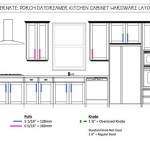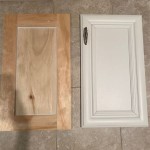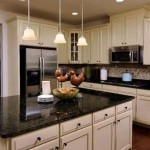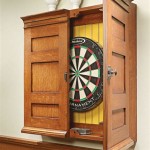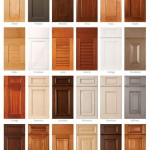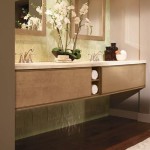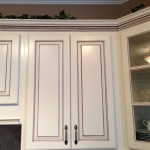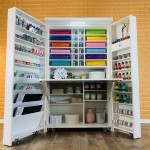Do You Have To Prime Cabinets Before Painting?
Painting kitchen or bathroom cabinets is a popular and relatively cost-effective way to update the look of a home. However, achieving a professional and durable finish requires careful preparation, and a crucial step in that preparation is often the application of primer. The question of whether priming is strictly necessary is a common one, with varying opinions based on the type of cabinet material, the existing finish, and the desired outcome. This article will explore the benefits of priming cabinets before painting, examine factors that influence the need for primer, and discuss the selection of the appropriate primer for different cabinet materials.
Priming cabinets before painting offers several advantages that contribute to a superior and longer-lasting paint job. Primer creates a uniform surface, improving adhesion, blocking stains, and enhancing the color and finish of the topcoat. Skipping this step can lead to paint failures, uneven coverage, and a less-than-desirable final appearance.
Enhanced Paint Adhesion
One of the primary benefits of using primer is its ability to improve paint adhesion. Most cabinet surfaces, particularly those with a glossy or smooth finish, are not naturally conducive to paint adhesion. Existing finishes, whether varnish, lacquer, or previous coats of paint, can create a barrier that prevents new paint from properly bonding. When paint is applied directly to these surfaces, it may be prone to chipping, peeling, or scratching over time.
Primer, conversely, is formulated to create a surface that paint can readily adhere to. It contains binding agents that grip the existing surface while simultaneously providing a textured surface for the topcoat to bond with. This enhanced adhesion strengthens the bond between the cabinet and the paint, leading to a more durable and resilient finish that can withstand daily wear and tear.
Furthermore, primers often contain ingredients specifically designed to penetrate porous surfaces, further enhancing adhesion. This is particularly beneficial for cabinets made of wood or MDF (Medium-Density Fiberboard), which can absorb paint unevenly if not properly sealed.
Stain Blocking Capabilities
Cabinet surfaces, particularly in kitchens and bathrooms, are frequently exposed to stains from grease, water, smoke, or food spills. These stains can bleed through the new paint layer, creating unsightly discolorations that detract from the overall appearance. Even after thorough cleaning, these stains may remain embedded in the cabinet material and resurface after painting.
Primers formulated for stain blocking contain specialized ingredients that prevent stains from migrating through the paint film. These primers create a barrier that effectively seals the underlying surface, preventing stains from bleeding through and ensuring a consistent and uniform paint finish. This is especially important when painting cabinets a lighter color, as stains are more visible against lighter backgrounds.
The type of stain-blocking primer required depends on the nature and severity of the stain. For mild stains, a general-purpose primer may suffice. However, for stubborn or persistent stains, such as grease or tannin bleed from wood, a specialized stain-blocking primer specifically designed for those types of stains should be used. These primers typically contain higher concentrations of stain-blocking agents and are more effective at preventing bleed-through.
Uniform Surface and Enhanced Color
Cabinets often have variations in surface texture and porosity, which can affect how paint is absorbed and how the final color appears. For example, areas that have been repaired or patched may have a different texture than the surrounding areas. Additionally, the edge-banding on some cabinets might be a different material than the cabinet doors and faces, leading to variations in paint absorption.
Primer helps to create a uniform surface by filling in minor imperfections and evening out the porosity of the cabinet material. This results in a smoother and more consistent paint application, minimizing variations in color and sheen. Without primer, paint may be absorbed unevenly, leading to a blotchy or inconsistent finish. This is especially noticeable with paints that have a higher sheen level, where imperfections are more easily highlighted.
Moreover, primer can enhance the color of the topcoat. Applying paint directly to a dark or unevenly colored surface can alter the final color of the paint. Primer provides a neutral base that allows the true color of the paint to shine through, ensuring accurate color reproduction. This is particularly important when painting cabinets a lighter color, as the underlying color can significantly affect the final hue.
Factors Influencing the Need for Primer
While priming is generally recommended, there are situations where it may not be strictly necessary. The decision of whether or not to prime depends on several factors, including the type of cabinet material, the existing finish, the color being used, and the condition of the cabinets.
Cabinet Material: The type of material the cabinets are made of plays a significant role in determining the need for primer. Raw wood and MDF are highly porous and require primer to seal the surface and prevent excessive paint absorption. Laminate and melamine cabinets, on the other hand, have a non-porous surface that is less absorbent, but require a specialized bonding primer to ensure adhesion.
Existing Finish: Cabinets with a glossy or smooth finish, such as those coated with varnish or lacquer, require primer to provide a surface that the new paint can adhere to. Sanding can help to roughen the surface and improve adhesion, but primer is still recommended for optimal results. If the existing finish is peeling or damaged, it is essential to remove it completely before priming and painting.
Color Change: When painting cabinets a significantly different color, especially when going from a dark color to a light color, primer is crucial to prevent the underlying color from bleeding through. Primer provides a neutral base that allows the new color to be applied evenly and accurately. Without primer, multiple coats of paint may be required to achieve the desired color, increasing the cost and effort involved.
Cabinet Condition: If the cabinets are in poor condition, with cracks, dents, or other imperfections, primer can help to fill in these imperfections and create a smoother surface for painting. Primer can also seal any exposed wood or MDF, preventing moisture from entering and causing further damage. In some cases, a wood filler may be needed to repair larger imperfections before priming.
Selecting the Right Primer
Choosing the appropriate primer is essential for achieving a successful paint job. There are various types of primers available, each formulated for specific purposes and cabinet materials. The most common types of primers include latex primers, oil-based primers, and shellac-based primers. Selecting the right primer depends on the cabinet material, the existing finish, and the desired outcome.
Latex Primers: Latex primers are water-based and are generally considered to be the most environmentally friendly option. They are suitable for use on raw wood, MDF, and previously painted surfaces. Latex primers offer good adhesion, stain blocking, and mildew resistance. They are also easy to apply and clean up with soap and water. However, latex primers may not be as effective at blocking stubborn stains or sealing porous surfaces as other types of primers.
Oil-Based Primers: Oil-based primers provide excellent adhesion, stain blocking, and sealing properties. They are particularly effective at blocking tannin bleed from wood and preventing stains from migrating through the paint film. Oil-based primers are also more durable and resistant to moisture than latex primers. However, they have a strong odor, require mineral spirits for cleanup, and take longer to dry. Due to environmental concerns, oil-based primers are becoming less common and may be restricted in some areas.
Shellac-Based Primers: Shellac-based primers are known for their exceptional stain-blocking capabilities and their ability to seal porous surfaces. They are effective at blocking even the most stubborn stains, such as water stains, smoke stains, and grease stains. Shellac-based primers also dry quickly and provide a smooth, hard surface for painting. However, they have a strong odor, require denatured alcohol for cleanup, and can be brittle and prone to cracking if not applied properly.
In addition to these general types, there are also specialized primers designed for specific purposes, such as bonding primers for laminate and melamine cabinets, and epoxy primers for metal cabinets. When selecting a primer, it is essential to read the manufacturer's instructions carefully and choose a product that is specifically recommended for the type of cabinet material and the desired outcome.
Proper preparation, including cleaning, sanding, and priming, is essential for achieving a professional and durable finish when painting cabinets. While priming may not be strictly necessary in all cases, it offers significant benefits that can improve the adhesion, appearance, and longevity of the paint job. By understanding the advantages of priming and carefully selecting the appropriate primer for the cabinet material and the desired outcome, homeowners can achieve a beautiful and long-lasting transformation of their kitchen or bathroom cabinets.

How To Prime Cabinets For A Smooth Finish The Turquoise Home
How Many Coats Of Primer Do I Need To Paint Kitchen Cabinets Quora

How To Paint Kitchen Cabinets A Step By Guide Confessions Of Serial Do It Yourselfer

How To Prime Cabinets For A Smooth Finish The Turquoise Home

How To Paint Kitchen Cabinets A Step By Guide Confessions Of Serial Do It Yourselfer

Refinish Kitchen Cabinets With Kilz Restoration Primer

What You Need To Know Before Painting Cabinets The Palette Muse

Painting Kitchen Cabinets Without Primer

How To Paint Kitchen Cabinets A Step By Guide Confessions Of Serial Do It Yourselfer

How To Prime Cabinets For A Smooth Finish The Turquoise Home
Related Posts

